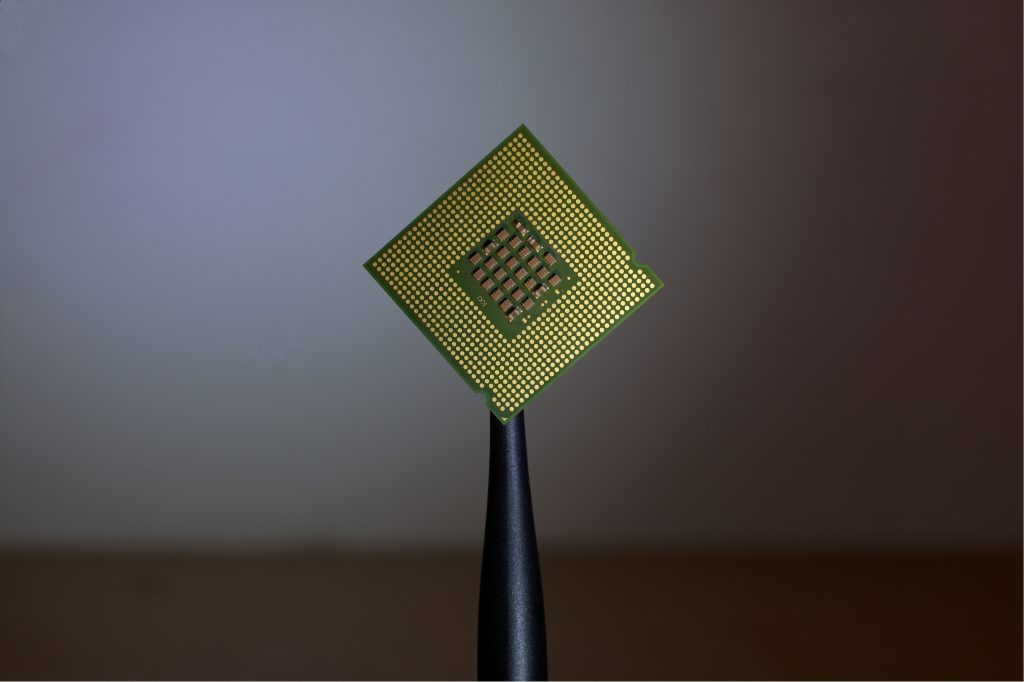 Microchip. Brian Kostiuk/Unsplash.
Microchip. Brian Kostiuk/Unsplash. I sat staring at the computer on February 6th, 2006, thinking about the press release I was about to send and the potential impact it could have on the human race.
The human implantable microchip, I thought, is about to make a major leap forward in the consciousness of the human mind and will be talked about and debated at a whole new level.
The human implantable microchip, I thought, is about to make a major leap forward in the consciousness of the human mind.
It started over a year earlier, with Internet research. I was looking for asset tracking and found a new product involving implantable microchips for security.
I called the manufacturer, VeriChip, and at my request, some design features were applied, and a prototype was sent to me in Cincinnati, Ohio, to be installed at a company called CityWatcher.
CityWatcher was a small company that had secured several new opportunities doing video surveillance for small businesses, feeding that video to the police. The company’s startup was triggered by the events of 9–11, and its business was growing.
The owner of CityWatcher was having some security issues, and felt that a microchipping solution might not only solve those issues, but would be in line with his company’s view of advancing technology.
Ultimately, there developed two reasons for this endeavor. One was to test the new implantable microchips, and the capability of integrating them into CityWatcher’s existing security system, and the other was to get societal reaction.
The integration with existing security systems was a success, but the societal reaction was a bit overwhelming [1].
While I stayed out the limelight for the most part, many of City-Watcher’s employees conducted radio and TV interviews over an intense two-week period.
For nearly a year, from the time of concept to press release, I came to the realization that the human implantable microchip was inevitable. That year was just the moment at which it would finally be pushed onto the public stage.
Why me, and why now, I had no idea, but with a press release from my company, Six Sigma Security, Inc., the time had arrived.
Once the initial impact was over, Human Resource departments at various companies began to look at policies and legal issues related to implantable microchips. Several states in the United States then passed laws to limit implantable microchip use and to address public concerns.
The human implantable microchip became a topic of conversation from water cooler chitchat to legislators to visionaries.
Over the next several years, I found myself giving talks and presentations to various groups on the subject, and saw debates rage about the pros and cons of implanting humans with microchips. At some of these presentations and discussions, there were people who becoming noticeably nervous and anxious at the thought of where this might go, while other attendees wanted to get microchipped as soon as possible. The reactions ran the gamut.
Even leading up the press release, one young reporter for a local business paper in Cincinnati said to me, “I don’t think there’s a story here.”
Several states in the United States then passed laws to limit implantable microchip use.
But then after telling several people in their early 20s of this project, their response was “How can I get one?”.
When I am asked questions about if, when, or how implantable microchips will be required of all people in society, I can only speculate like everyone else. My best guess is, it will never be required, but will just become part of our technological advancement like smart phones and computers, and over time become a readily available and acceptable part of life.
One of the interesting side notes to the project was that as people were willing to be microchipped, it seemed that more people around them were willing to get microchipped as well. I.e., once a person got past a certain feeling of uneasiness by watching others go first, they seemed to be more willing to accept it.
Reflecting back on February 6th, 2006, and on my considerations at the time of what would be the potential impact of this human microchipping project, and its accompanying press release, on the human race, the defining question becomes, what will be the positive impact on society’s security, versus, what liberties are lost in order to achieve that security?
Author
Gary Retherford is with DHL Express in the Cincinnati area, KY. (Employer information provided for identification purposes only.)

Gary Retherford






 JOIN SSIT
JOIN SSIT